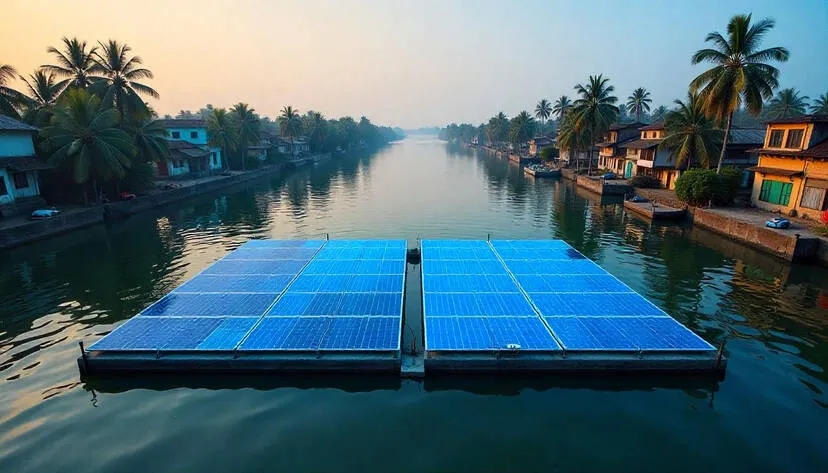

THIRUVANANTHAPURAM/ WAYANAD: Kerala's daily electricity consumption stands at 5,200 megawatts (MW). While hydropower projects generate 2,096 MW, solar energy contributes only 415 MW. This creates a significant gap between production and demand. To address this issue, the state government is planning to expand floating solar plants across various water bodies, including reservoirs, lakes, ponds, and backwaters.
A study conducted by the Electricity Department estimates that if floating solar panels are installed in suitable water bodies, the state could generate 6,000 MW of electricity daily, i.e 800 MW more than the current demand.
Based on this study, the Cabinet has approved a draft policy for floating solar projects. A list of potential locations will be prepared, and implementation will take place in collaboration with private entities. Contracts will be awarded based on specific terms and conditions after categorizing the water bodies into different segments, such as major dams, lakes, and medium-sized water bodies.
Additionally, the Education Department and ANERT (Agency for Non-Conventional Energy and Rural Technology) have been directed to expedite the installation of rooftop solar panels in government schools.
Existing floating solar projects in Kerala
World’s largest floating solar plant in Narmada River
The world's largest floating solar plant is located on the Omkareshwar Dam in the Narmada River, with a generation capacity of 600 MW and a project cost of Rs 3,000 crore.
Banasura Sagar floating solar project – Commissioned in 2017
Kerala's first floating solar project at Banasura Sagar Dam, Wayanad, was commissioned in 2017 at a cost of Rs 9.25 crore. The generated electricity is transmitted to the KSEB grid via underwater cables. The site hosts three plants: